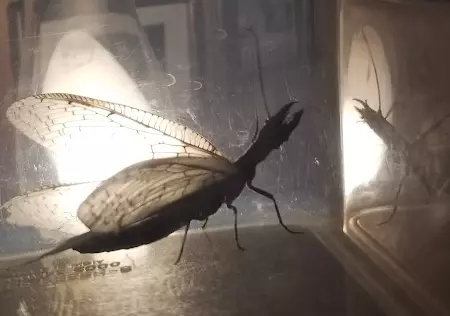The Hudson Valley has experienced a particularly buggy summer, with residents encountering not just Spongy Moth Caterpillars, but now massive insects that make even a bat seem small by comparison. Though this might be a slight exaggeration, one local recounts an encounter with a Dobsonfly in her home that required a significant amount of effort to remove.
Paty Quyn shared her experience of encountering a Dobsonfly in her living room. Not one to kill bugs, she has switched to a catch-and-release approach since a traumatic incident involving a wood spider and a can of raid. Armed with a large container and a lid, she managed to capture the Dobsonfly and release it outside, despite its aggressive nature. She advises against handling them directly due to their potentially nasty bite.
Quyn’s curiosity about the creature led her to entnemdept.ufl.edu, where she learned more about the Dobsonfly, a species her husband had inadvertently let into the house. Despite his uncertainty about its entrance, the large insect made quite an impression on Quyn during their nighttime encounter.
Dobsonflies are attracted to areas near water, such as the rocky creek behind Quyn’s house. Their eggs hatch at night within one to two weeks, and the newly emerged hellgrammites—Dobsonfly larvae—are often carried by air bubbles to suitable habitats, usually fast-flowing streams with rocky bottoms.
Quyn’s decision to release the Dobsonfly was met with approval on social media, where many people recognized the insect and advised letting it go. Dobsonflies, particularly their larvae, are beneficial to the environment. Hellgrammites are valued by bait shops and fishermen for trout fishing, leading to concerns about over-harvesting.
Also Read:
- Managing the Aftermath of the 2024 Illinois Cicada Emergence: Tips on Dealing with Netting and Dead Bugs
- Early Emergence of 17-Year Cicadas in Chicago Marks a Rare Natural Event
Despite their intimidating appearance, Dobsonflies play an important role in the ecosystem. The Hudson Valley’s residents are encouraged to conserve these beneficial insects, highlighting the balance between human interaction and nature.





